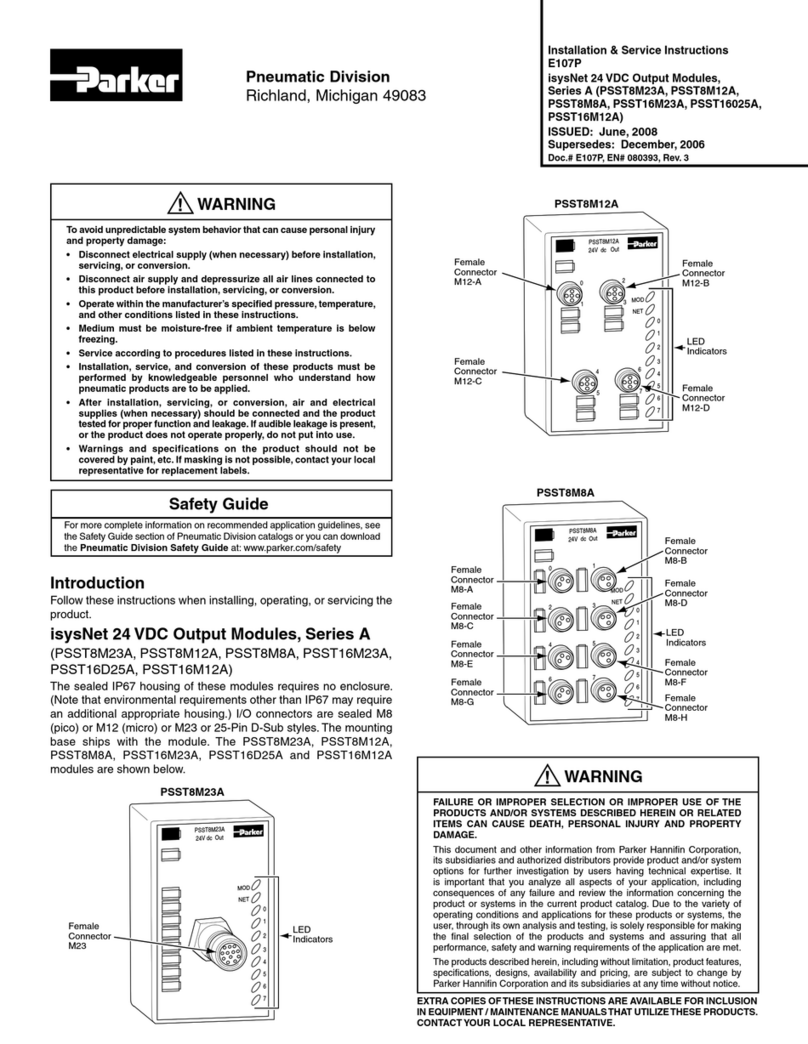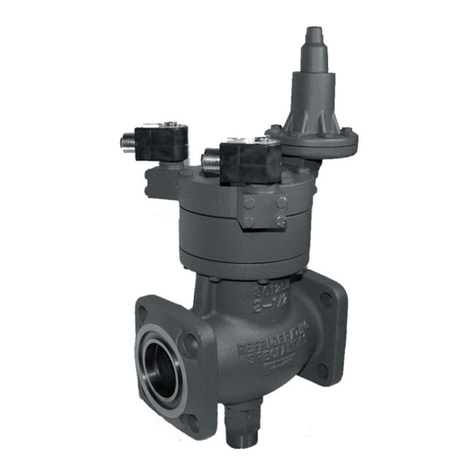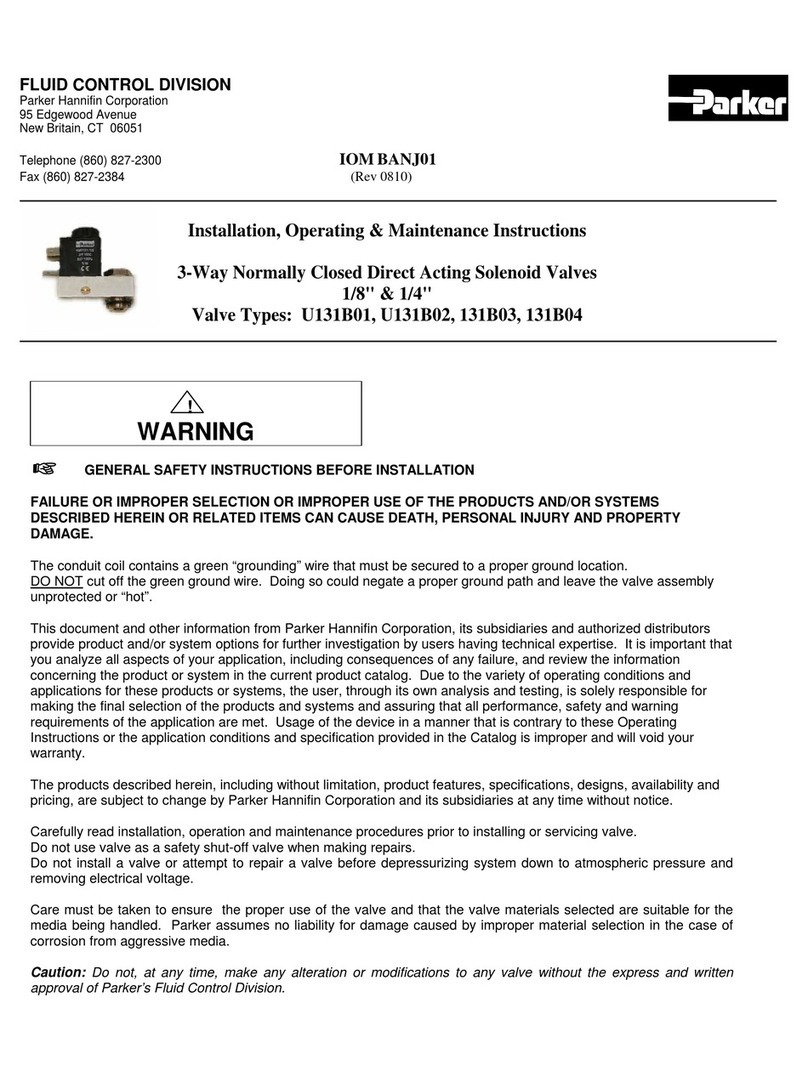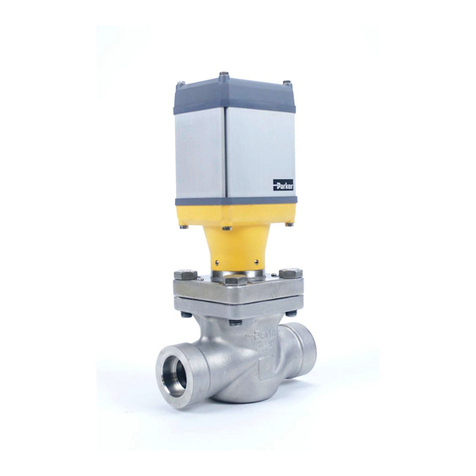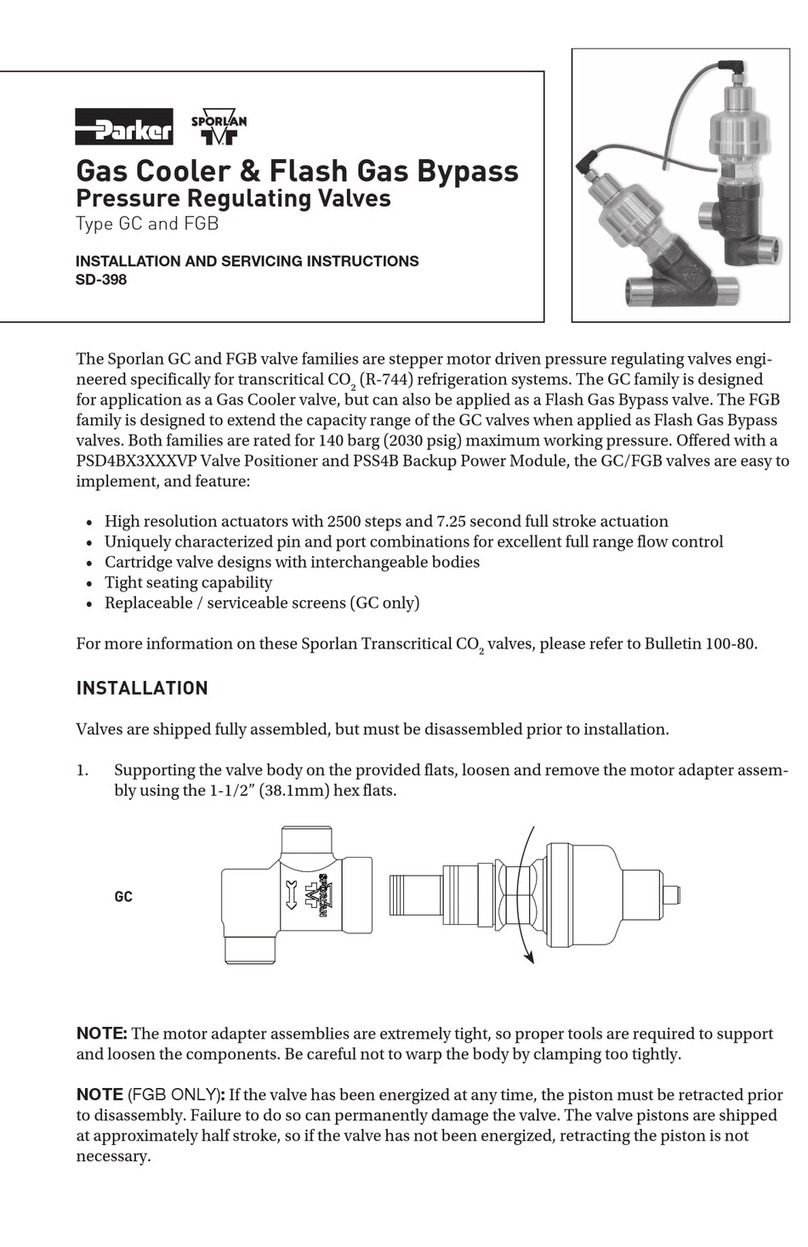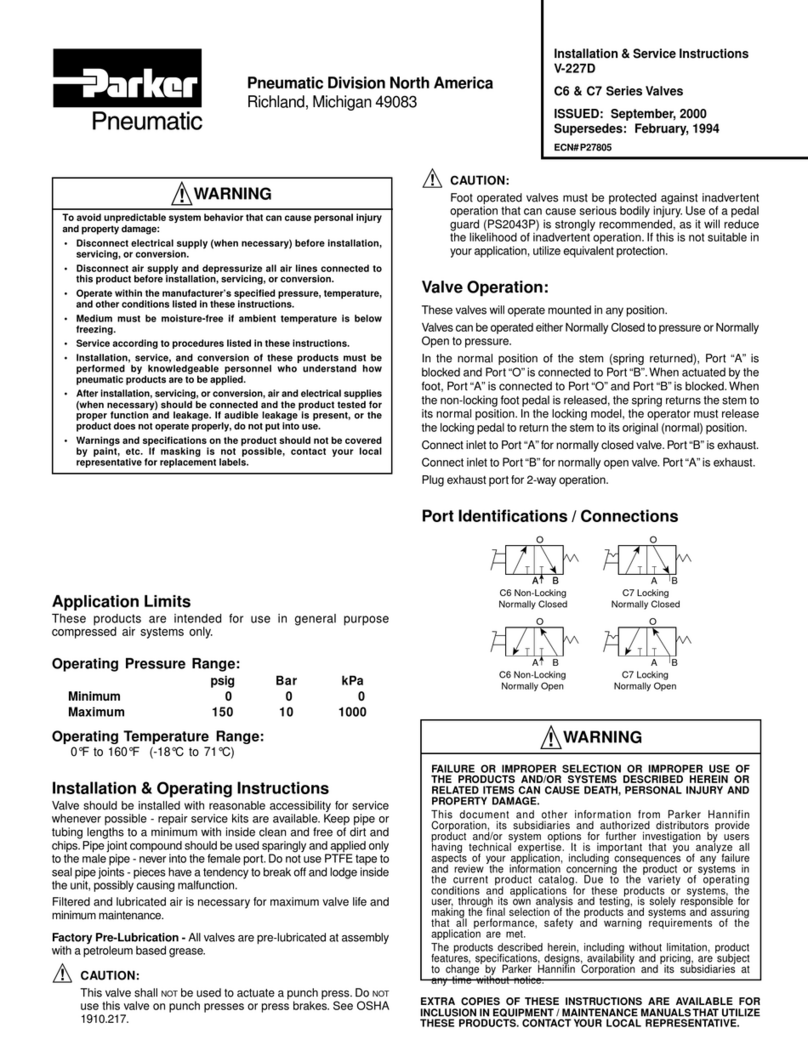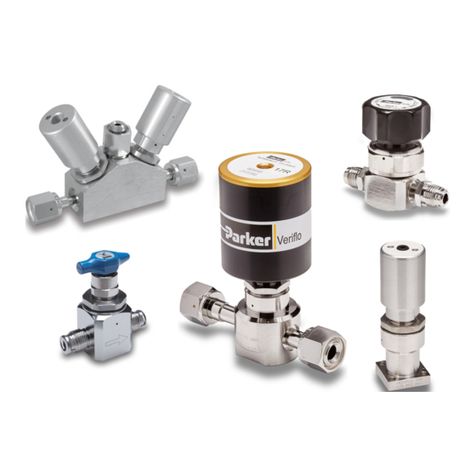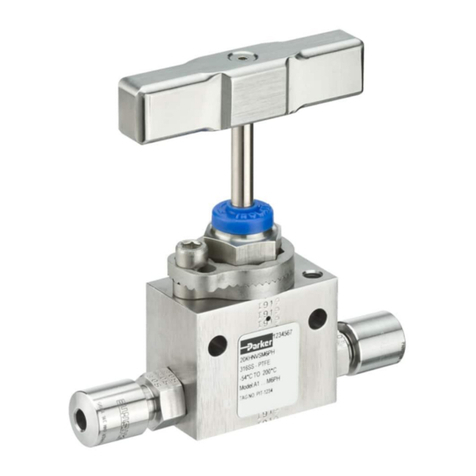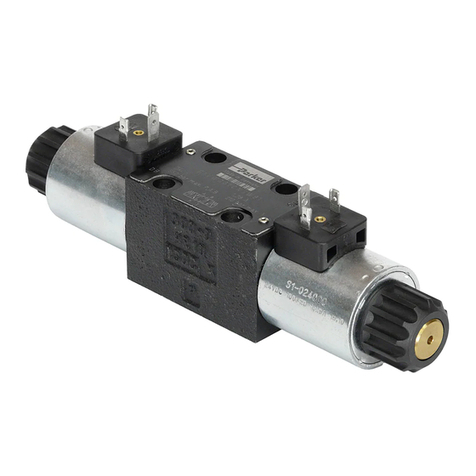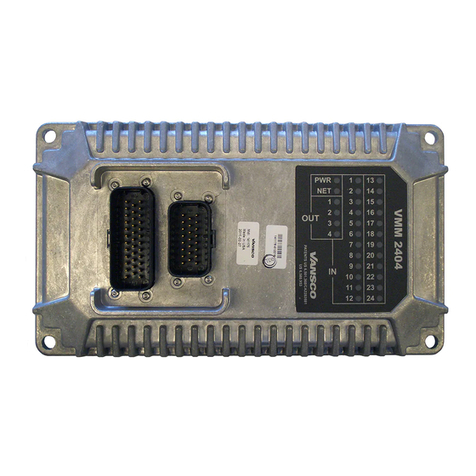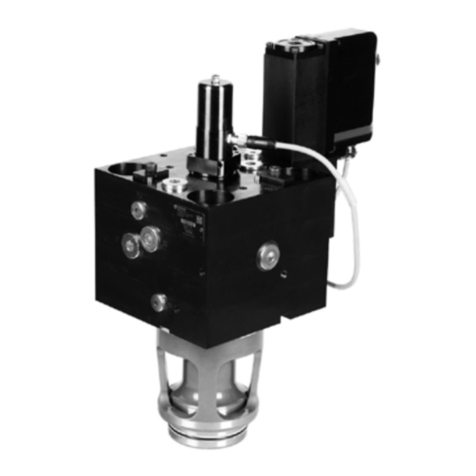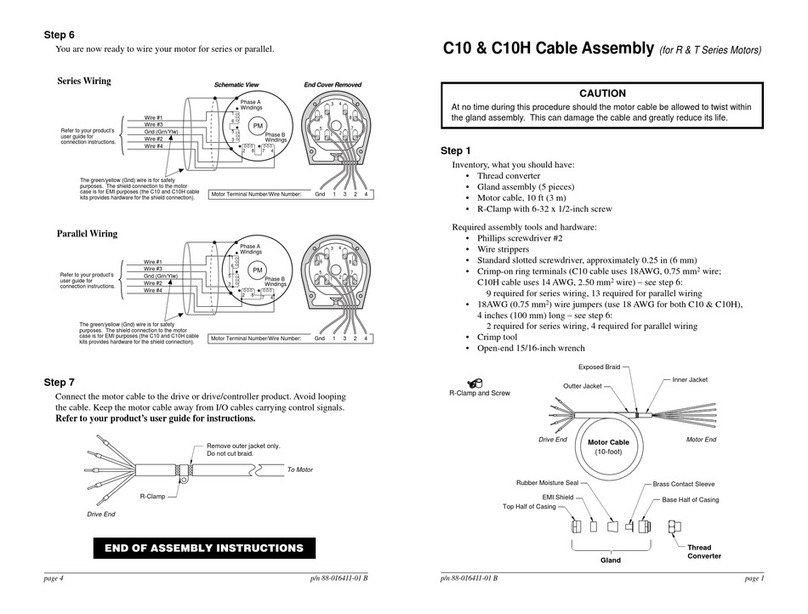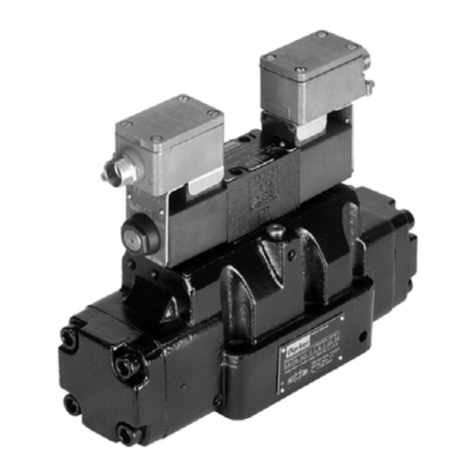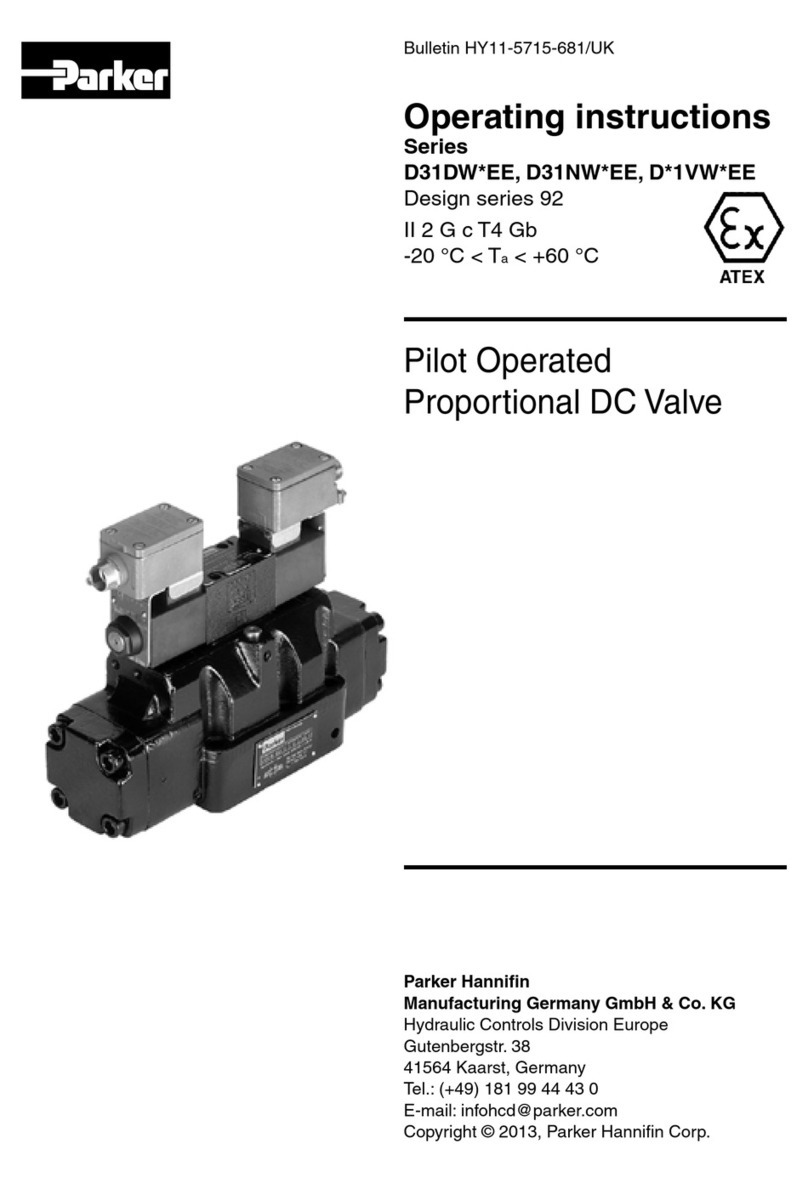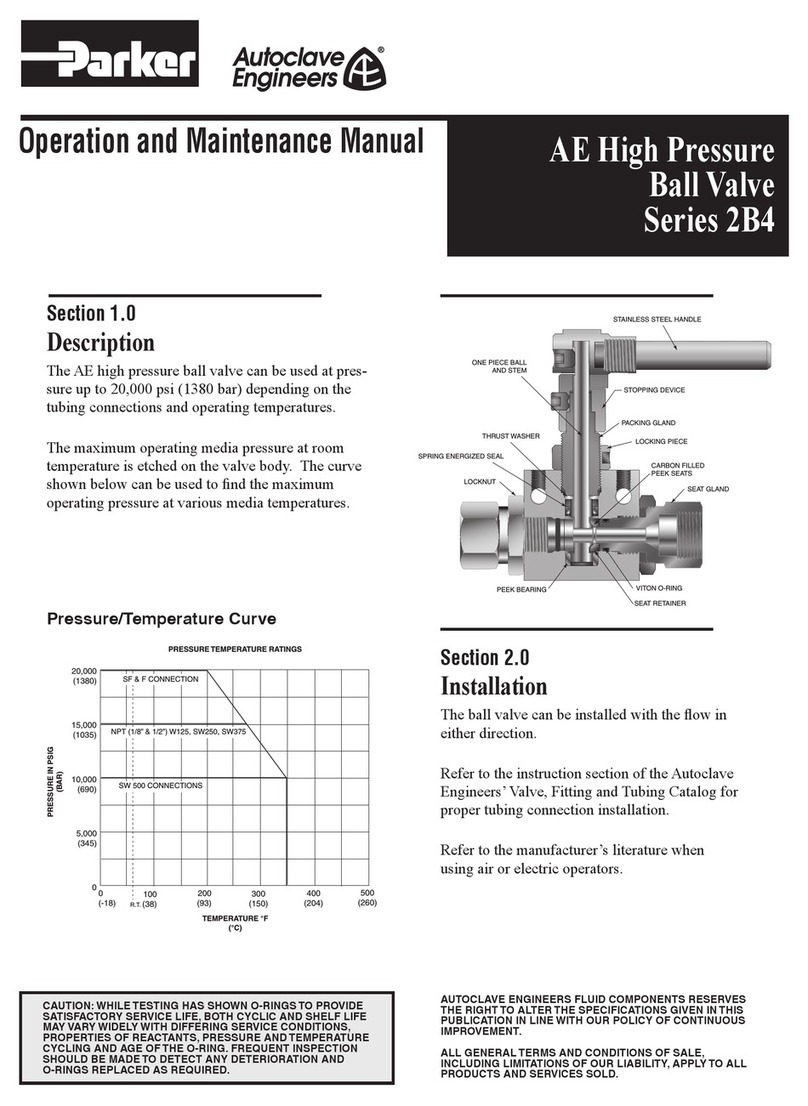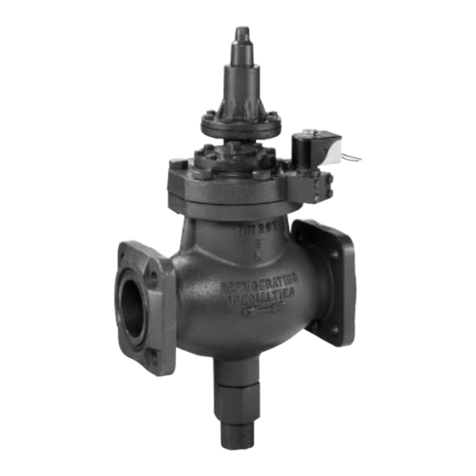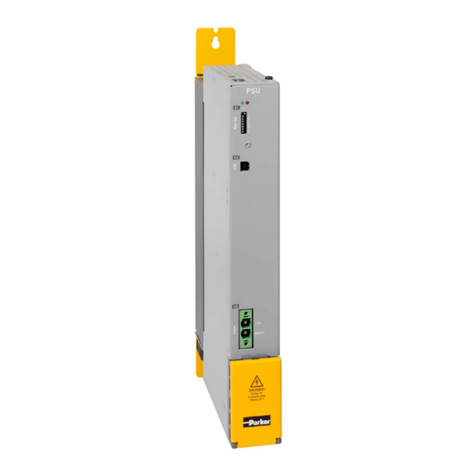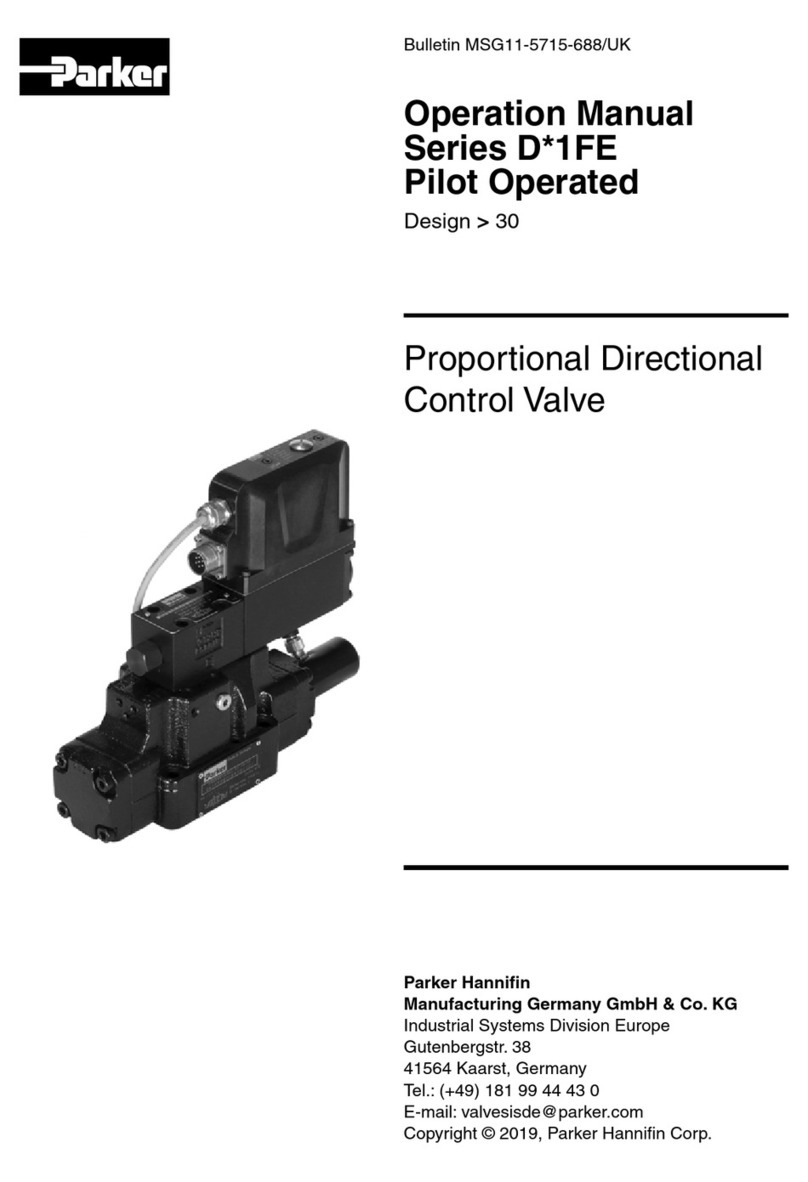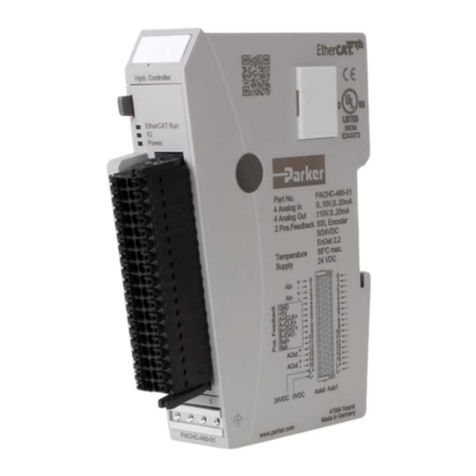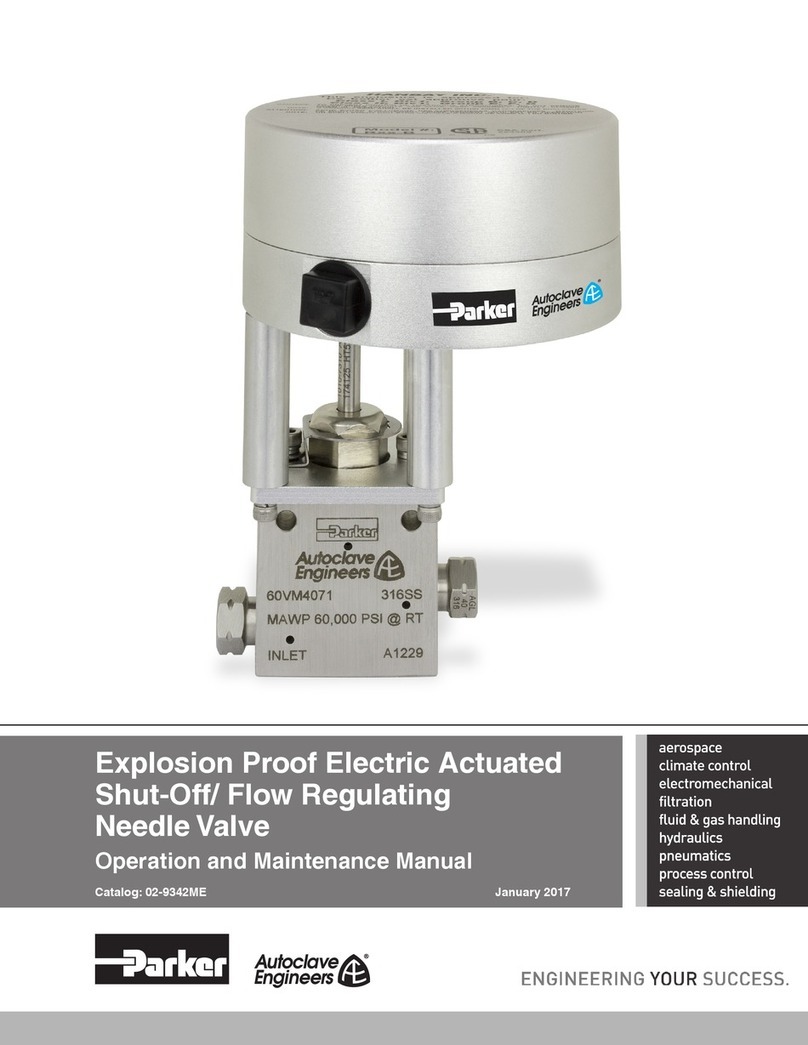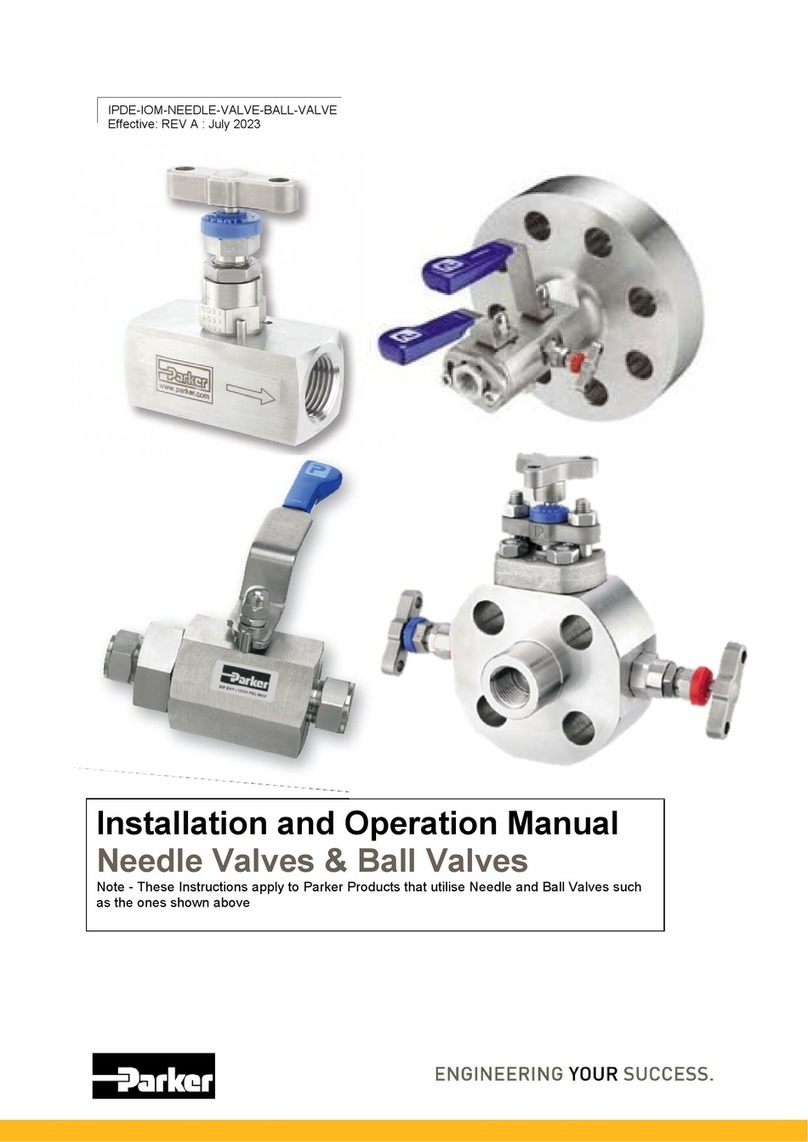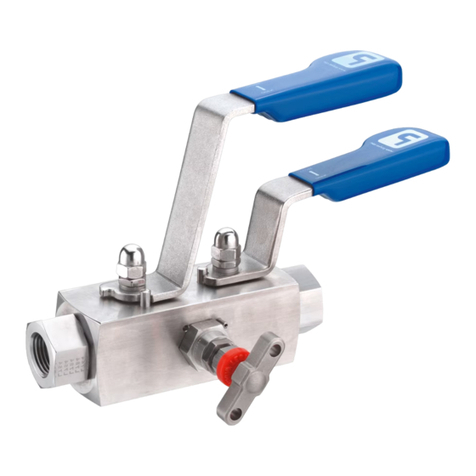
4
Parker Hannifin Corporation • Refrigerating Specialties Division
2445 South 25th Avenue • Broadview, IL 60155-3891 USA
Telephone: (708) 681-6300 • Fax (708) 681-6306
Installation
Protect inside of valve from dirt, chips and moisture
during installation. Be sure to remove protective plugs
from valve before installation. Install the valve in an
accessiblelocation forservicing.DONOT INSTALLTHE
CHECKVALVEATTHEINLETOF A SOLENOIDVALVE,
OR A REGULATOR WITH AN ELECTRIC SHUT-OFF
FEATURE. DO NOT INSTALL AT THE INLET OF AN
OUTLET PRESSURE REGULATOR IN A SYSTEM
WHERE LIQUID MAY BE TRAPPED BETWEEN TWO
VALVES. Check Valves when used with such valves
should always be installed at the outlet of the valves.
The valve must be installed with the flow arrow on the
valve pointing in the direction of permissible fluid flow
through the valve.
TheType CK1 are for installation on horizontal pipelines
only.The valve must be installed with the cover on top.
Tighten the flange bolts evenly.Before putting the valve
into operation check the manual opening stem. For
automatic operation, turn the stem counterclockwise as
far as it goes; turn clockwise for manual open position.
The CK1 Check Valves may be closed-coupled to R/S
ControlValves and most hand valves by using a Special
R/S Male Adapter Ring.
Service Pointers
Dirt or otherforeign material in thesystemis thegreatest
singlecause ofvalve malfunction.Beforedisassembling
a check valve for servicing, read and become familiar
with the Safe Operation Instructions in this bulletin as
well as in the current issue of Safety Bulletin RSB.
Check the following chart for possible symptoms and
corrections.
Symptom Probable Reason Correction
Valve does not Stuck piston Disassemble valve
close or there due to dirt or and clean
is leakage chips. thoroughly.
through valve. Burrs on Polish or replace
Piston piston.
Manual stem Unscrew manual
is in open stem (turn
position counterclockwise)
(turned
completely in).
Eroded or worn Replace entire
seat on piston piston-main valve
main valve assembly.
Valve does Stuck piston, Disassemble valve
not open. due to dirt or and clean
chips. thoroughly.
Warranty
All Refrigerating Specialties products are warranted
against defects in workmanship and materials for a
period of one year from date of shipment from factory.
Thiswarrantyisin forceonly when productsare properly
installed, field assembled, maintained, and operated in
use and service as specifically stated in Refrigerating
SpecialtiesCatalogs orBulletins fornormal refrigeration
applications, unless otherwise approved in writing by
Refrigerating Specialties Division. Defective products,
orparts thereofreturned to thefactorywithtransportation
charges prepaid and found to be defective by factory
inspection will be replaced or repaired at Refrigerating
Specialties option, free of charge, F.O.B. factory.
Warranty does not cover products which have been
altered, or repaired in the field, damaged in transit, or
have suffered accidents, misuse, or abuse. Products
disabled by dirt or other foreign substances will not be
considered defective.
THE EXPRESS WARRANTY SET FORTH ABOVE
CONSTITUTESTHE ONLYWARRANTYAPPLICABLE
TOREFRIGERATINGSPECIALTIESPRODUCTS,AND
ISINLIEUOFALLOTHERWARRANTIES,EXPRESSED
OR IMPLIED, WRITTEN OR ORAL, INCLUDING ANY
WARRANTYOFMERCHANTABILITY,ORFITNESSFOR
APARTICULARPURPOSE.Noemployee, agent,dealer
or other person is authorized to give any warranties on
behalf of Refrigerating Specialties, nor to assume, for
RefrigeratingSpecialties, any otherliabilityinconnection
with any of its products.
Safe Operation (See also Bulletin RSBCV)
People doing any work on a refrigeration system must
bequalified andcompletely familiar withthe systemand
the Refrigerating Specialties Division valves involved,
or all other precautions will be meaningless. This
includes reading and understanding pertinent
Refrigerating SpecialtiesDivisionProduct Bulletins, and
Safety Bulletin RSBCV prior to installation or servicing
work.
Where cold refrigerant liquid lines are used, it is
necessary that certain precautions be taken to avoid
damage which could result from liquid expansion.
Temperature increase in a piping section full of solid
liquid will cause high pressure due to the expanding
liquidwhich canpossiblyrupture agasket,pipe or valve.
All hand valves isolating such sections should be
marked, warning against accidental closing, and must
not be closed until the liquid is removed. Check valves
must never be installed upstream of solenoid valves, or
regulators with electric shut-off, nor should hand valves
upstream of solenoid valves or downstream of check
valves be closed until the liquid has been removed.It is
advisable to properly install relief devices in any section
where liquid expansion could take place.
Avoid all piping or control arrangements which might
produce thermal or pressure shock.
For the protection of people and products, all refrigerant
must be removed from the section to be worked on
before a valve, strainer, or other device is opened or
removed.FlangeswithODS connections arenot suitable
for ammonia service.
